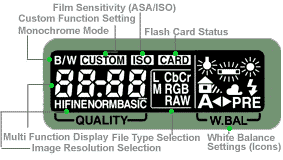 |
 |
<<<--- Credit: Image courtesy of Mr. Tony Pollock <tony@natcam.com> from National Camera Exchange ("NATCAM") Natcam also maintains a popular Ebay Store where you can take a visit to scout for Nikon photographic items. Image copyright © 2004 All rights reserved. Please respect the visual property of the contributing photographer.
February, 2001. Nikon unveiled their 2nd generation Professional Digital Still SLR camera, Nikon D1x which incorporates a 5.47 million effective pixels or in 2.62 million pixels settings, which affects the shooting speeds (3 fps for up to 9 consecutive shots). The image resolution was greatly improved from the original 2.74 mega pixels Nikon D1 Digital SLR camera model which was first introduced back in 1999. One of the many interesting fact was, along with the official debut of D1x, Nikon also took the opportunity to introduced a sister model that has a slight different configuration which labeled it as Nikon D1H. As the name suggested, basically, the primary model, D1x was designed for resolution/image sharpness while the latter was optimized more for fast workflow. As I mentioned at the section of Nikon D1 where I thought the D1H was more like an upgrade to the original model rather than categorized it as a new model but since it was a product designed with prevailing technological limit at the time of its introduction, as Nikon users, one just has to digest how the Company defined a new product. Well, as the D1H shares many similarities with the older model, I have segment it under the original Nikon D1 site where you can check or compare both of them at that section. So, this site is more D1x specific rather than featuring both models. Further, Nikon's own Nikon D100 Dgital Still SLR camera - supposedly a lower end spec-Nikon D-SLR was announced in Feb. 21, 2002. The D100's high capacity CCD sensor, with its modest entry price and ability to render 3,008 x 2,000-pixel image (approx. 6.1 megapixels) became an even more attractive package than the D1 Series bodies. Whatever it is, although the D100 was extremely well received among pro-consumers (primary due to its price which is so much cheaper than the D1X), but D1 Series models remain as a truly professional class Digital Still SLR.
 |
The Nikon D1x also has an enhanced model (upgrading firmware) introduced in late 2002 , which contains a far greater memory buffer and offers at least 200% improvement in 3 fps continuous-drive image handling. The immediate benefit is, 21 JPEG images or 14 Raw images can also be shot at the moderately fast 3 fps shooting rate. Further, the supplied Nikon Capture 3.5 software also enables a 10-megapixel output for Raw Data files; the software now allows full 16-bit image quality and vignette control of wide-angle lenses, for use either in the studio or when post-processing Raw NEF files in the field. When coupled with a high capacity Write-Accelerated Lexar card - as in the D1X PowerUp Card Kit. |
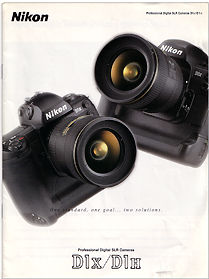 |
NOTE: Actually, in addition to the "power-up" models (D1X, D1H and D100),Nikon also announced upgrading the Capture photo editing software - Capture 3.5 (especially when handling with Nikon Electronic Format (NEF) files (Capture 3.5 can now process NEF files produced by the Nikon D1X to 10MB in size, resulting in better potential for making large size prints directly from NEF files). It will also be offering buffer memory size enhancement service for its D1X camera as it directly affects how many pictures can be taken in one continuous sequence before the camera pauses to write images to the memory card. With the upgrade, this will effectively increase the buffer size of the camera, enabling it to capture 21 JPEG or TIFF files or 14 NEF raw files in continuous mode from the previous 3 fps up to 9 fps in JPEG or TIFF mode, and 6 in NEF raw mode. Lastly this upgrade doesn't comes freely, it costs some $$ ..(approx. 230.00USD)..So, if you are intend to invest into a D1x, see if the calling price includes an upgrade within the package (usually it demands a little extra premium from standard version). |
With the introduction of the Nikon D1x, whatever it is, surely the hardest hit company at the time was Kodak's modified Nikon bodies. IF I can recall, back in 1999, Kodak actually had their first 6-mega pixels Digital Still SLR camera which was a Canon EF-mount Kodak DCS-520 which based on the hot selling Canon EOS-1n body chassis The Kodak/Nikon DCS-620 introduced in May, 1999 was still confined to a poor 2 million pixels image resolution and it was actually has to delay until year 2000 that a 6 million pixels Kodak/Nikon DCS-660 was finally materialized, the DCS-660 - which like the DCS-620(x) was also based on a Nikon F5 body chassis to modify into Kodak digital SLR, the debut of the camera finally has offset the discomfort many Nikon users felt (surprisingly, Kodak replaced the DCS-660 with a top of the line model, the Kodak DCS-760 only quite late in 2001 and similar to the Nikon marketing concept, it also has a sister model, DCS-720X introduced a year later in 2002 that was specifically designed for fast workflow but a a compromised pixel resolution of 2.74 Million pixels). So, the little background between the Kodak, Canon and Nikon gives you a rough idea what has happened, where the market is heading and how the D1x positioned itself among the competitions.
 |
<<<--- Credit: Image courtesy of William Mauldin Productions, Inc. Meadows of Dan, VA / Greensboro, NC <bill@mauldin.net> from http://www.mauldin.net WMP (Ebay ID wg4r) also maintains a popular Ebay Store where you can take a visit to scout for Nikon & other used items. Image copyright © 2004 All rights reserved. Please respect the visual property of the contributing photographer. |
So, the decision of providing a dual options was not unusual during that period. With the comparing models available on the market at the time, you can consider both the Nikons offer comparing top image quality in digital imageries, speed, operation and functionality where previously one has to cough out double or even triple in entry cost to enjoy similar level of benefit. Both models offer Nikon high quality capabilities for color reproduction, white balance and precision exposure control, while the D1x is optimized for image quality, the D1H is optimized for action photography as well as smooth file management and file transmission via network, with its continuous shooting up to five (5) frames per second, making it the fastest and most action-oriented pro digital SLR available during this period. But more to this was, the inclusion of the Digicams, Nikon photographic system seemed quite "complete" as photographers can have both top quality of film-based and digital medium SLRs in the Nikon F5, F100 as well as the Nikon D1x/H. Naturally, regardless the medium of preference, you can easily tab and share other critical system support components such as Nikkor optics, Speedlights, system accessories which now makes the Nikon system quite formidable with the seamless transition of all components.
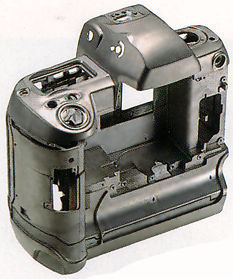 |
One of the key attraction of the Nikon single-digit D-series SLRs is, they are extremely well made camera bodies. - something that like all the Nikon professional class film-based SLRs which project a solid, rigid feel which is heavily missed in the entry models. The major components are encased inside a durable die-cast metal structure where lightweight, tough magnesium (Mg) construction for rigidity and strength as well as lighter, smaller construction. This body is also highly resistant to penetration by water drops, just like the F100 and the Nikon F5.. This provides exceptional quality and value as well as confidence for the working photographers to bring the camera to places. For quite a long while, Nikon has ignored the importance of this and has reverting back to |
 |
Featuring a 5.47 megapixels* CCD (original pre-launch brochure indicated a 5.33 million CCD was used) and powerful algorithm set where through interpolation it can produce 8-bit 17.7-megabyte TIFF files (with the Nikon Capture a 16-bit 34.4-megabyte TIFF files can be produced). |
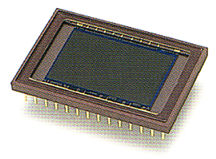 |
The CCD's size (23.7 x 15.6mm) also provides a wider dynamic range and enables it to capture a great deal of light, giving it a more dynamic image sensitivity. The CCD also features reduced noise, high stability and wide S/N ratio, which permits to realize for a sharper, clearer smooth-toned images. Both the D1x and D1H employ a precision Low Pass Filter just in front of the CCD to virtually eliminate color aliasing and moir6 effect on detailed patterns and high contrast edges. |
 |
The horizontal resolution is limited to 3/4 of the theoretical maximum, and consequentially allows a reasonable vertical gain of 3/2. Conducted at high speed, the processing enables recording at 5.9 megapixels (3,008 x 1,960). |
There are also a few interesting
with this D1x upgrade where a newly added Lossless-compression mode for Raw-file
save mode that helps to improve and efficiently handles the CF card capacity and
image-handling. The improved algorithm of the camera has a Total Image Quality design
which utilizes spatial processing to maximize color fidelity, ensuring smooth tone
gradation and crisp detail. Strangely, the D1-series cameras incorporate a mechanical
shutter in addition to the charge-coupled electronic shutter, blocking out excess
light to eliminate smear while maintaining high image quality captured.
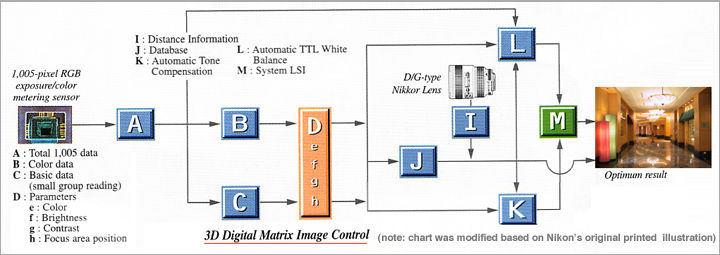 |
Credit: scan & retouched from Nikon D1x/h literature |
The flowchart of how the metering sensor works: 3D Digital Matrix Image Control Using the same 1,005-pixel RGB exposure/color metering sensor employed in the D1, the D1x and D1H are capable of judging the image even before it is taken, and then intelligently and automatically optimizing the digital result. The three keys to this highly effective image enhancing function are 1) 3D Color Matrix Metering, 2) TTL White Balance and 3) Tone Compensation. 3D Color Matrix Metering calculates the optimum exposure value by comparing the brightness and color data, along with subject-to-camera distance, while referring to a database of actual shots. TTL White Balance then judges color temperature and makes fine adjustments to the predetermined value, automatically achieving proper white balance by analyzing the ambient light coming through the lens and delivering highly accurate coloration. Finally, Tone Compensation selects the optimal tone curve to enable the reproduction of natural tones according to the scene brightness and contrast.
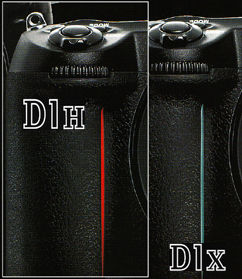 |
Total Image Quality: D1x: 23.7 x 15.6mm 5.33-million effective pixel Nikon RGB 4,024 x 1,324 CCD interpolates the files to a 5.9 megapixel equivalent which as why stated as 6 million pixel by Nikon and such resolution enables A3-size (297 x 420mm) prints possible at 200 dpi. For the original camera basic specification, Raw data file size of 7.6MB at 12-bit color depth can be processed to a 33.6MB (34.4 megabytes for enhanced model) 16-bit color depth file via "Nikon Capture 2 (3)" software. The camera produces a selection of JPEG files as well as TIFF formats at 17.7 megabytes,. |
The original specification
listed the 4024 x 1324 sensor processed to 3,009 x 1960 pixel output); 5.4 megapixel
CCD can also operate to produce output performance as a 2.7 megapixel CCD; ISO equivalency
125-880; the reduction of image size enables continuous picture rate up to 3.0 fps
with 9-frame buffer for files sizes up to 17.7 megabytes (note: 2000 x 1312 pixel
recording is also possible). However, picture angle approx. 1.5x lens focal length
which is same as the original Nikon D1 model. On the other hand, the D1H has a 23.7
x 15.6mm 2.74 megapixel CCD; which can produce a selection of JPEG files, and TIFF
file size of 7.9 megabytes with 8-bit color depth and when uses NEF files with Nikon
Capture, it is capable of producing up to 15 megabytes 16-bit color depth; 2012 x
1324 sensor processed to 2,000 x 1,312-pixel output); the sensitivity of the D1H
is expanded to a more broader margin at ISO equivalency 200-1600; this permits the
D1H to handle continuous picture rate up to 5.0 fps with 40-frame buffer for file
sizes up to 7.9 megabytes. So, if we use both Nikon D1X and D1H to compare with the
competing model such as the 6 million pixel Kodak/Canon DCS-560 (ISO 80-200) or the
1998's 2 mega-pixels Kodak
Professional DCS 520/Canon D2000
(ISO 200-1600 ); both the Nikons hold up the competition comfortably. Even if we
used the top of the line Kokak modified Nikon F5's 6 million pixels DCS-760 (and
the to measure their performance, both Nikons also stand up quite well minus the
fact, the Kodak DCS-760 has a suggested
U.S. list price of $19,995-00 !
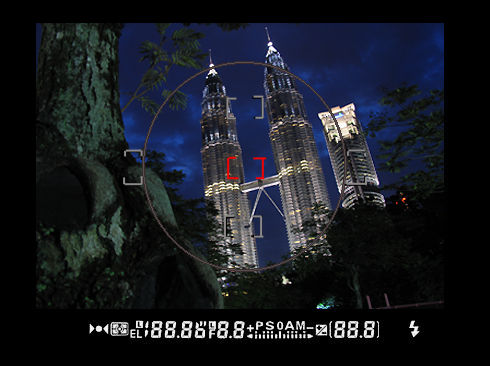 |
Imaging Processing System One of the main strength of Nikon SLRs (film-based or digital) is metering, the D1x has encompasses the best of Nikon metering technological know-how in this area. Frankly, I would say theoretically, just like any modern SLRs, it is impossible to make metering error with this camera and the variable of options can just simply sum up as comprehensive in it selections for any photographer to tackle any lighting conditions, regardless of day or night. |
* A revised
designed Advanced Image Processing System featuring Nikon 3-D Digital Matrix Image
Control that deprived from the Nikon F5 with an improved algorithm. Both the cameras
provide a wide range of exposure/metering options:
(1) exposure control using exclusive 3-D Color Matrix metering, along with an alternative, time proven 75/25 Center-Weighted
Metering or you can also select Spot metering mode that offers pinpoint accuracy,
reading a 4mm-diameter circle. The metering area also corresponds to the manually
selected focus area when CPU lenses are used). The exposure control system comprised
of 4 exposure modes: [![]() ] Programmed Auto with Flexible Program, [
] Programmed Auto with Flexible Program, [![]() ] Shutter-Priority Auto, and [
] Shutter-Priority Auto, and [![]() ] Aperture-Priority
Auto, as well as [
] Aperture-Priority
Auto, as well as [![]() ] Manual exposure mode. The auto modes are also supplemented by Exposure
compensation that available from an extended -5 to +5EV, in 1/2 or 1/3 EV steps.
Instant exposure compensation is possible even during shooting, using either of the
two command dials via Custom Setting. Further, there is also an Auto Exposure Bracketing
which will auto brackets two or three frames in 1/3 to 1 EV steps is possible in
all exposure modes.
] Manual exposure mode. The auto modes are also supplemented by Exposure
compensation that available from an extended -5 to +5EV, in 1/2 or 1/3 EV steps.
Instant exposure compensation is possible even during shooting, using either of the
two command dials via Custom Setting. Further, there is also an Auto Exposure Bracketing
which will auto brackets two or three frames in 1/3 to 1 EV steps is possible in
all exposure modes.
(2) TTL
White Balance with combination of Automatic and manual controls (Preset and Manual modes, in addition to Auto
mode. In Preset mode, a value previously measured by TTL white balance can be stored
and recalled. Manual mode provides six settings;a) Incandescent light, b) Fluorescent
light, c) Fine weather, d) Cloudy weather, e) Shade and f) Flash condition featuring
seven-step fine-tuning capability;
(3) When the light levels are not favorable, no problem, as the D1-series cameras feature a five-segment
TTL Multi Sensor for precise flash output control. It fires imperceptible Monitor
Pre-flashes before actual shooting to determine the amount of flash output by monitoring
the light reflecting off of the shutter curtains. 3D Multi-Sensor Balanced Fill-Flash
for DI The Dlx and DlH incorporate Nikon's exclusive 3D Multi-Sensor Balanced Fill-Flash
concept, which is controlled by the five-segment TTL Multi Sensor and newly developed,
enhanced algorithm for more accurate flash control. This feature is available when
an SB-28DX, SB-50DX (or other equivalent) Nikon Speedlights is used with a D/G-type
Nikkor lense, and permits the creation of beautiful balanced flash pictures even
under difficult or unfavorable lighting conditions, such as where the background
is reflective or completely absent. Five flash sync modes Both cameras offer: a)
Front-Curtain Sync (normal sync), b) Red-Eye Reduction, c) Red-Eye Reduction with
Slow Sync, d) Slow Sync, and e) Rear-Curtain Sync modes.
(4) Tone
compensation and Unsharp Masking: If
you prefer a lighter or heavier tone than the one automatically selected by 3D Matrix
Digital Image Control, you can choose from four preset tone curves via Custom Setting
#24. Or, using the optional "Nikon Capture 2/3" Control Software, you can
even create an original tone curve with your personal computer and download it to
the camera. Custom Setting #23 lets you choose from four preset values to control
the sharpness of the image.
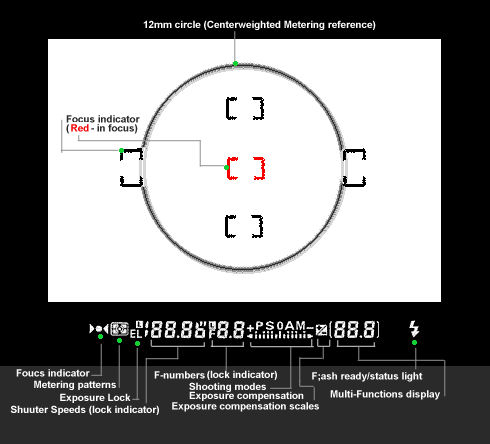 |
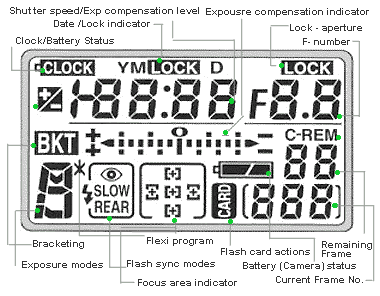 |
|
|
|
* One of the great improvement made to
the upgrade from the earlier D1 (and E series) is: Both the D1 upgrades incorporate
two color modes, selectable to best suit the application. Mode 1(sRGB-optimized)
provides controlled, well balanced images without any need for further processing,
making it particularly well-suited for photojournalists and for websites where high
speed operation is indispensable. Mode II (Adobe RGB optimized) offers final output
based on a wider range suitable for commercial printing, making it ideal for studio
shooting and prints that require high image quality.
* A noise reduction system is provided throughout the effective ISO equivalency range.
D1x ISO-equivalent 125-880; (Nikon D1H ISO-equivalent 200-1,600) which enables it
to shoot fast sequences.
* The camera offers very
versatile image quality modes as you can select from among compressed JPEG (approx.
1/4,1/8, 1/16), uncompressed TIFF* (8-bit YCbCr-TIFF~ 8-bit RGB-TIFF) and uncompressed
Raw* modes ("Nikon View " or optional "Nikon capture 2/3" software
is required in order to reproduce images in Raw-YCbCr TIFF mode). Lossless-compression
mode for Raw-file save mode, which uses a special process and algorithm to compress
image data to 50 to 60% without sacrificing image quality, is also possible.
Enhanced speed
 |
* Massive on-board image buffer memory for up to 9 consecutive shots in JPEG or TIFF mode (6 for Raw data); frame rate of 3 frames per second for 17.7 megabyte files. |
Note: as comparison, the newer D2X can shoot like a D1H (5 fps) but at its full resolution 12.4 million pixels (21 jpegs or 15 NEF images); with the speed enhanced Nikon D1H, up to 5 frames per second* for 7.5 megabyte images is possible.
* High-speed five-area AF system that features a Multi-CAM1300 autofocus sensor module incorporating five AF sensors - the same performance-proven module found in the top-of-the-line film based SLRs like the Nikon F5 and F100.
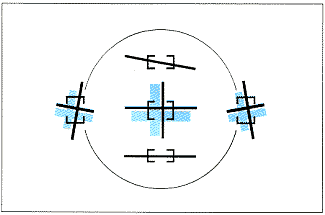 |
Focus modes include a high-speed Single Servo IS) AF and Continuous Servo (C) AF modes, and a fully mechanical Manual focus (M) mode. Both D1x (H) provide two AF area modes: a) Single Area AF that gives you five strategic focusing positions to work with in the frame. Useful when shooting carefully composed landscapes or portraits. b) Dynamic AF - In (C) AF mode, if the subject moves out of the selected focus area, Dynamic AF instantly shifts the focus to another of the five areas. In (S) AF mode, the Closest Subject Priority function automatically selects the focus area with the closest subject so that you can concentrate on shutter timing. in addition, the Focus Tracking automatically activated for moving subjects, it is augmented by overlap servo, which ensures constant lens focusing adjustment - even during driving - and Lock-On™, which allows continuous tracking of a subject, even in the event that it's momentarily obscured. |
* A faster shutter release time and startup (approx. 58 ms - which was the shortest among all D-SLR - a great asset of the D1x (note: in comparison, the next upgrade, D2X is even more impressive, merely at a blistering 37ms)
* One-touch playback and return to picture capture mode (see more info below)
* Enlarged playback and thumbnail playback (choice of 9 and 4 thumbnails display)
* 100% playback coverage on color monitor
* High-speed image processing with newly developed system LSI for rapid throughput and shutter availability
* Advanced image buffer system up to 9 consecutive shots in JPEG mode for D1x and for up to 40 consecutive shots in JPEG mode with D1H.
* Top shutter speed of 1/16,000 sec.; D-TTL flash sync speed up to 1/500 sec; FP flash sync up to 1/8800 using Nikon SB-28DX or other compatible/equivalent Nikon speedlights
* Faster IEEE1394 (Apple's innovative firewire) interface enables even large-volume data to be transferred at high speed, the D1x has a better performance than the earlier D1 at transfer rate.
 |
Camera operation |
* Image segment viewing playback and thumbnail playback (in either 9 or 4 segments) for quick image evaluation after shooting. In Slide show mode, you can view captured images in order, as they advance one at a time automatically. You can also see the histogram (graphical representation) of the captured image's exposure in the LCD Monitor. Highlight Point Display This feature alerts you to overexposure by flashing a warning in the overly bright areas.
* 100% area-accurate playback coverage on TFT color monitor.
* GPS position information saved within image data file (if connected to GPS unit via RS-232C interface) Note: NMEA0183 protocol-compatible models of GARMIN and MAGELLAN can be connected; but connection cable not provided.
* 3-D Multi-Sensor Balanced Fill-Flash with five-segment TTL Multi Sensor with newly developed algorithms for enhanced performance
* Compressed NEF file (raw CCD data) save mode to increase CF card capacity and image transfer speed without sacrificing image quality.
* Shared ergonomics and F-mount system compatibility with Nikon professional SLR body and accessory range.
* Lightweight, durable magnesium (Mg) body
* Image aspect ratio compared to 35mm format, factor of 1.5X of the primary lense in use.
* The cameras also incorporate an optical-type fixed eye-level pentaprism viewfinder which features frame coverage of approx. 96%, an eye point at higher than 22mm and a built-in diopter adjustment
* NTSC/PAL selectable: You can view images on an NTSC- or PAL-system monitor.
* Anti-vibration mode is also provided: Crucial in specialized applications such as photomicrography.
 |
Nikon System Compatibility |
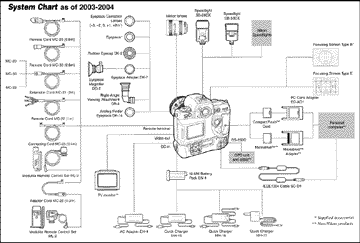 |
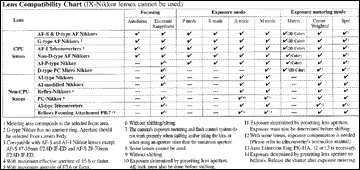 |
DOWNLOAD Lens Compatibility Chart (56k Gif) |
* Uses Nikon
D-TTL compatible speedlights (SB-28DX, SB-50DX or other equivalents , other Nikon
Speedlights operate with non-TTL operation)
* Uses same broad selection of individual Nikon accessories as Nikon D1
* Uses same interchangeable battery, battery charger, AC adapter and other dedicated
accessories as the earlier Nikon D1 model.
D1x Accessories
(applicable to Nikon D1H as well as even used on the original Nikon D1 where applicable):
* Set consists of: respective SLR camera body model, neck strap, Video cable, Nikon
View Software, Rechargeable battery EN-4 (approx.
1,000 pictures),
Quick Charger MH-16 (100-240V AC)
, body cap BF-1A.
 |
* Optional accessories: AC Adapter EH-4, Replacement/additional batteries EN-4, Capture Software, IEEE-1394 Connecting cable SC-D1, MH-17 12V DC) Automobile Recharge Adapter (can be plugged into an automobile cigarette lighter)); The F100's Quick Charger NM-15 and the E3's EH-3 can also be used. |
 |
<<<--- Credit: Image above courtesy of William Mauldin Productions, Inc. Meadows of Dan, VA / Greensboro, NC <bill@mauldin.net> from http://www.mauldin.net WMP (Ebay ID wg4r) also maintains a popular Ebay Store where you can take a visit to scout for Nikon & other used items. Image copyright © 2004 All rights reserved. |
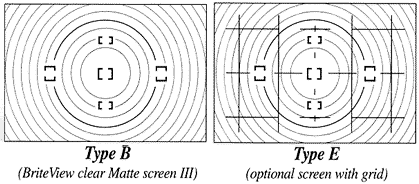 |
* The B-type BriteView clear Matte screen III, which enables an unobstructed view and easy focusing, is interchangeable with the optional E-type screen with grid for D1-series cameras. This configuration is particularly well suited for perspective shooting. |
* Replacement charger MH-16, Nikon Capture Software, Nikon View
* 10-pin remote control accessories: Remote Cord MC-20/MC-30/MC-22, Extension Cord MC-21 and Modulite Remote Control Set ML-3 can be used with D1-series cameras. Via the MC-25 Adapter Cord, devices with two-pin terminals can also be used. A new Wireless Transmitter WT-2/2A / WT-1/1A, Extended Range Antenna WA-E1 is also possible.
* Compact Flash Card (Type I/II) & IBM's Microdrives: In addition to Nikon's EC-CF series, Dl-series cameras may be used with the following Compact Flash Cards: SanDisk Corporation's SDC-FB8/16/32/48/64/ 96/128 and Lexar Media Corporation's CF008/016/032/048/064/080 4X USB, CF008/016/032/048/064/080 8X USB and CF128/160 1OX USB. For the D1x/D1 H, IBM Corporation's 512MB and 1GB Micro drive Cards are also supported. (340 card not supported)
Notes: Set requires the following additional products in order to become fully operational: Compatible Nikkor lens, (2) Type I or II compatible compact flash data storage card, (3) Compatible computer system, (4) Nikon Capture software is an optional product, but is required in order to use the IEEE-1394 connecting cable to handle NEF raw data files and for remote control operation from a compatible computer
* Nikon Speedlight SB-28DX, SB-50DX or other Nikon equivalent offer most of the advanced flash control features, including 3D Multi-Sensor Balanced Fill-Flash. The SB-28DX/50DX equip D1-series cameras with AA (Auto Aperture) Flash capability. Furthermore, the SB-50DX offers TTL wireless slave flash capability.* Other Nikon speedlights can be used for non-TTL operation. |
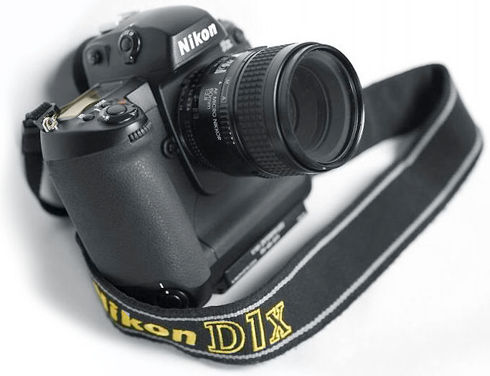 |
Some Personal Notes: |
An important aspect the Nikon D1 series bodies brought to us was, it has enabled us to enjoy quality SLR-type digital imageries at a more realistic price. Anyway, the more "economic" D1H was not being introduced together with the D1x which has a suggested list price of approx. RM17,000-00 (<- USD5,000-00), the D1H was actually made available a few months later after the official debut of the D1x. But as those days top quality digital SLRs prices were usually bundled with an out-of-reach prices primarily due to the commanding market where Kodak held for so long (nevertheless, Kodak was indeed the pioneering force in this specialized field during those days and has laid a path for all of us to enjoy what is possible now). Apparently, Nikon took the "strange" phenomenon of price structure Kodak created earlier very well and has capitalized to fix their single-digit D models a fold up in prices as compared to an up to date film-based flagship Nikon SLR model.
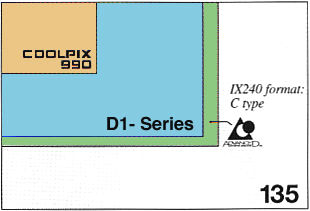 |
I don't think this "odd business formulation" will changed in the near future but come to think of it, even if the price sounds "reasonable" if we use prices of some of the previous high end Kodak models were compared, but frankly, I still find the price fixing for the single-digit D series Nikon Models hard to justify. For an example, how can a Nikon F100 equivalent modified of a D-SLR can has a calling price that is almost 1X than that of a, say top grade film based Nikon F6 ?? So, either the prices of the so-call high end D-models have to be lowered further or we just have to abide this kind of price abuse, besides, ALL we paid for with such a high price tag is only a better than an APS-type kind of picture format. Say anything I like, but consumers are still flocking onto the bandwagon, huh ? Update: the 12.4 megapixels CMOS DX sensor powered Nikon D2X is still not a full frame model yet. |
|
| But for those who practices conventional wisdom, just wait or just take a good look at alternative models such a Nikon D100 or the D70 is not entirely a bad idea as we can use it while wait for a reasonable full frame Nikon Digital SLRs to appear in another few years time (it will, as it is a highly competitive market place). For those who can't wait, just buy and forget what I am stating here, because living in such a chaotic world, it is also not a bad idea to give yourself a treat, enjoy while you can.. | ||
If you are still not happy with the image resolution the D1X provides, perhaps the 3rd generation and much improved Nikon D2X with their seemingly perfect 12.4 million pixels resulted from the use of a new CMOS (23.7 x 15.7mm) sensor will satisfy you for a while but as I said, the Nikon D2X, again with a sub USD5,000-00 (suggested price, almost the same with a new Nikon D1X when it launched) is still not a full frame (135) format digital SLR yet, in terms of resolution, it shoots as 12.4 million pixels (1.5X) and still process a D1X comparable 6 megapixels output when switches to 2X picture angle at 8 fps) but until then, that was the best you can get from Nikon because in theory, the D2X is acted like a double D1X (as at 2004). Too bad, huh ? ...because as long as a full frame Nikon D-SLR is materialized, you just have to digest these kind of temptation of looking into another upgrade. Well, a good news is, the prices of used Nikon D1X SHOULD fall much lower with the D2X around because the next step-up pixel-game is 8-12.5 million pixels. The D1x/h does have other minor hick ups in its feature lists, although most of them are minor and should not be included as an important point to pick on this camera, however, as Digital SLRs usually consumes more power than conventional film-based SLRs, added the fact even some AFS-Nikkor lenses somehow still cannot reach the status as noise/fictionless, which adds to the already power hungry consumption of power. I have a friend who actually shoot more with the D100 than the D1X now as he also thinks the D100 performs more reliably than the D1x in terms of power consumption. Although Nikon stated the use of D1x with Rechargeable battery EN-4 should provides approx. 1,000 exposure cycles, but in real life, the camera does has much shorter power cycles that it stated. Well, without power, regardless of how excellent the camera is, it is considered dead duck on the field, but as many seasoned photographers realized and have accepted the fact carrying more spare cells is a routine life to be a modern photographers, this should not be an issue but I really missed the day of the generation of the Nikon F3, huh ..?? I do know it is impossible as it is film-less now..
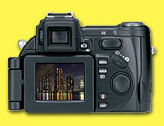 |
Personally, the D1X is a very good and handy Digital SLR, other than price, there are two areas in terms o operational ease I think all the Nikon Digital Still SLR camera can be improved upon: The 0.86X (with 50mm f/1.4 lens set to infinity) viewfinder magnification with an Eyepoint set at 19.9mm is one of the key weakness of all Nikon D-SLR. Simply because it has taken off the key advantage of TTL image viewing in a SLR. I know Nikon did their best by offering a frame coverage of approx. 100%, but as the current D-series SLRs has a far smaller CCD format than that of a film based 135 format which they should patch this area by having a LARGER magnification instead. |
Frankly, it is almost like forcing to shoot using the rear LCD rather than using it like a conventional SLR. Next, the fixed LCD is not entirely perfect - do you know even the Canon G-series flexible vari-angle LCD which provides swivel design was first copied on the Nikon Coolpix 5700 (?) was a far more perfect way of allowing photographer to use than that of a SLR ? Never tried before ? borrow one and you will know what I meant.. |
|
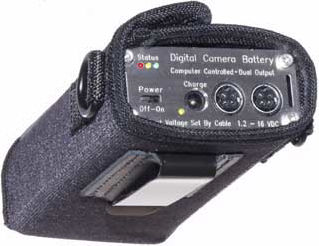 |
Third party consideration: Someone has recommended me this, but I have no way to verificy if it works. You can use the message board to share if you have any experience with it. ...."....Digital Camera Battery is an external power pack that operates your camera, flash, laptop and more. Full power flash recycle time is reduced from 6~10 seconds with AA batteries, to about 2 seconds on a standard shoe mounted flash. Our external battery pack allows digital cameras to operate several times longer than the internal camera battery, even in cold weather...." - Tim Dodge President / CEO - Digital Camera Battery Inc.. 2328-B Destiny Way Odessa, FL 33556 Phone: 727-375-9865 Fax: 727-375-8688 |
| NEXT | Technical Specifications for Nikon D1X Digital Still SLR camera OR Main Reference Map (Nomenclature )
For
other issues,
use the MESSAGE
BOARD
for Nikon Digital SLRs
Instruction
Manual for Nikon D1X
in PDF format
(External Link): 7.2 MB Other useful
PDF downloads (Instruction Manual(s) for: WT-1 Wireless Attachment (3.2MB)
| MH-18 Battery Charger for ENEL3 | MB-D100 (4.8MB) | EH-5 AC-Adapter (D100) | EN-EL3 (D100)
PDF Instruction
Manual (6.9MB)
for Nikon Capture 2.0
| PDF Instruction
Manual (12.2MB) for
Nikon Capture 3.0
PDF Instruction
Manual (11.9MB) for
Nikon Capture 4.0 | PDF Instruction
Manual (6.0MB)
for Nikon Capture 4.1
| Back | Index Page of Digital Nikon SLR cameras
| Back |
Main
Index Page
of Pictorial History of Nikon SLR camera
E-Series:
Nikon
E2/E2s | Nikon
E2N/E2Ns |
Nikon
E3/E3s
D-Series: Nikon
D1 | Nikon D1H
/ Nikon D1x
| Nikon
D100 | Nikon
D70 | Nikon
D2H | Nikon
D2X
Related Info:
Fuji Film's FinePix
S1 Pro| FinePix
S2 Pro | FinePix S3 Pro
Kodak DCS-Series SLR models: Main Index Page (7 Parts)
The
Rangefinder
|| The
Nikonos ||
Compact Cameras
SLRs -1959/1979 |
1980/1990 | 1991/1999 | y2k/2003 | 2004 ~
The
Eyes of Nikon:-
Nippon
Kogaku KK Rangefinder
RF-Nikkor
lenses:-
Main Index Page
Nikon
Auto
Focus
Nikkor lenses:- Main Index Page
Nikon
Manual
Focus
Nikkor lenses-
Main Index Page
Fisheye-Nikkor Lenses - Circular | Full Frame |
Ultrawides Lenses - 13mm15mm18mm20mm | Wideangle Lenses - 24mm28mm35mm |
Standard Lenses - 45mm 50mm 58mm | Telephoto
Lenses - 85mm105mm135mm180mm & 200mm |
Super-Telephoto
Lenses - 300mm 400mm 500mm 600mm 800mm 1200mm |
Special
Application lenses:
Micro-Nikkor Lenses - 50mm~55mm -60mm 85mm -105mm 200mm Micro-Zoom 70-180mm
Perspective
Control
(PC) - 28mm 35mm
PC-Micro
85mm
Dedicated
Lenses for Nikon F3AF: AF 80mm f/2.8 | AF 200mm f/3.5 EDIF
Depth
of Field Control (DC): 105mm 135mm
Medical
Nikkor: 120mm 200mm
Reflex-Nikkor Lenses - 500mm 1000mm 2000mm
Others:
Noct Nikkor |
OP-Nikkor | UV Nikkor 55mm 105mm |
Focusing Units | Bellows-Nikkor 105mm 135mm
Nikon
Series E Lenses: 28mm35mm50mm100mm135mm |
E-Series Zoom lenses: 36~72mm75~150mm70~210mm
MF Zoom-Nikkor
Lenses:
25~50mm | 28~45mm | 28~50mm | 28~85mm | 35~70mm | 36~72mm E | 35~85mm | 35~105mm | 35~135mm |
35~200mm | 43~86mm | 50~135mm | 50~300mm | 70~210mm E | 75~150mm E | 80~200mm | 85~250mm |
100~300mm | 180~600mm | 200~400mm | 200~600mm | 360~1200mm | 1200~1700mm
Tele-Converters: TC-1 | TC-2 | TC-200 | TC-201 | TC-300 | TC-301 | TC-14 | TC-14A | TC-14B | TC-14C | TC-14E |
TC-16
|
TC-16A | TC-20E
![]()
Nikon F
| Nikon F2 |
Nikon F3 |
Nikon F4 |
Nikon F5 |
Nikon F6 |
Nikkormat / Nikomat |
Nikon FM
| Nikon FE/ FA | Nikon EM/FG/FG20 | Nikon Digital SLRs | Nikon - Other models
MIR Supports for Photographic Community: Various Message Boards/Community
Forums
Nikon
F-series|
Nikon
F2-series|
Nikon
F3-series|
Nikon F4-series| Nikon
F5-series|Nikkormat/Nikomat-series
Nikon FM-series|Nikon
FE-series|Nikon
FA|Nikon
Digital
SLR
series|Various
Nikon
Models|Nikkor
Optic
-shared
Others:- Free Trade Zone - Photography| Free Trade Zone - Business Community |Free To Zouk - Photographic Community
Apple's Mac Public Community Message Board | Windows based PC &
Apple/Mac
Public Community Trade Exchange Centre
Recommended links to understand
more technical details related to the Nikkor F-mount and production Serial Number:
http://rick_oleson.tripod.com/index-153.html by: my friend, Rick Oleson
http://www.zi.ku.dk/personal/lhhansen/photo/fmount.htm by: Hansen, Lars Holst
http://www.mir.com.my/rb/photography/hardwares/nikonfmount/lens2.htm
http://www.photosynthesis.co.nz/nikon/serialno.html
About
this photographic
site.
Home - Photography
In Malaysia
![]()
Copyright
© 1998. leofoo ®. MIR Web Development Team.
[Left Brain][Right
brain][Home-MIR]
[Invention][Art & Design][Clubs]
[Portfolios][On assignments]
[Trading
room][Knowledge
& Resources]
[Free-trade-zone][Thoughts & opinions][Links]
